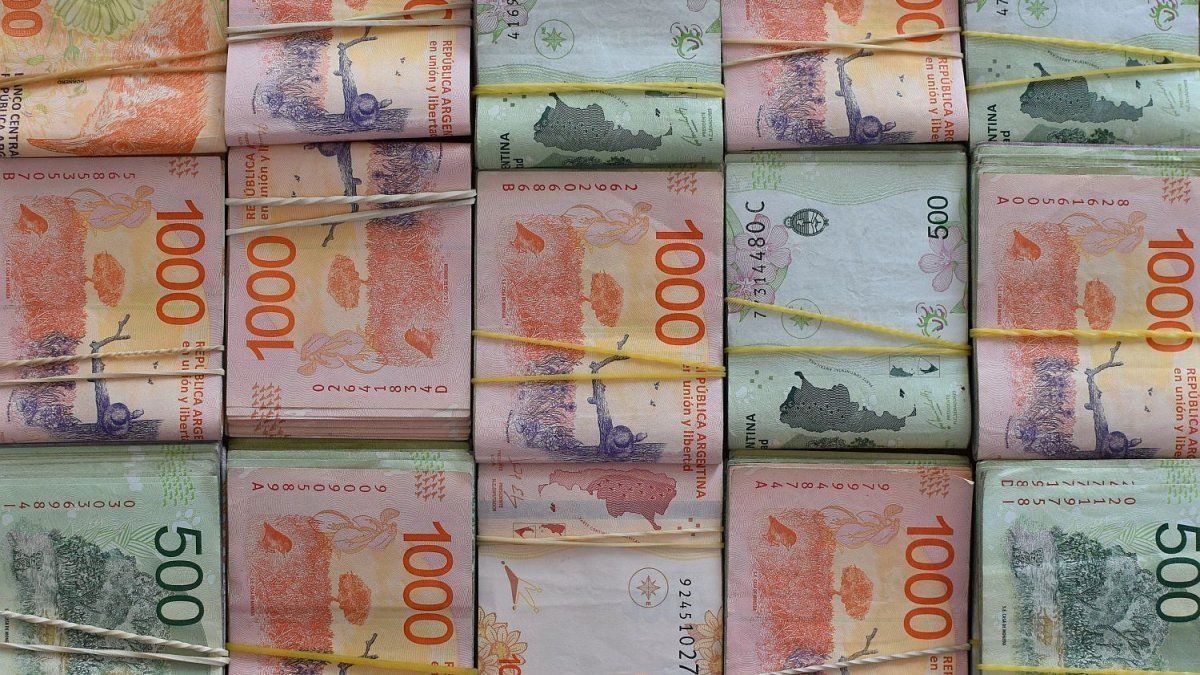He Disarmament of Fiscal Liquidity Letters (LEFIS) It generated an unexpected headache to the government, since it caused a abrupt collapse of interest rates. This adds pressure to a exchange market that had already been overheating, so The Central Bank and the Ministry of Economy have already intervened with different toolsamong which highlighted the return of passive passes, at a rate of up to 36%.
As of July 10, the BCRA stopped offering Lefis to the banks, an instrument that allowed financial entities to place their leftover weights at an annual nominal rate (TNA) of 29% and with the possibility of recovering the liquidity immediately. The economic team, driven by Luis Caputo, planned to capture the money of these letters through lyrics and treasury bonds.
This decision is framed in the change of monetary policy derived from the agreement with the International Monetary Fund. From then on, The government seeks to control the amount of money in the economy, something that with the existence of Lefis depended a lot on the decisions of the banks.
The counterpart of this turn in the strategy is that the interest rate is freed to the supply and demand of the market. However, the banks did not pour massively to Caputo’s debt. “On the contrary, they decided to get liquids not to complicate their own operation, which generated $ 10 billion emitted,” said Pablo Moldovan, director of the CP consultant.
“The weights that were issued were partly offered in the short -term money markets pushing the rates down“The economist added, although he noted that the effect could have been much greater given the magnitude of the issuance. It particularly highlighted the collapse in the return of the Caúcion (investment instruments also short -term), from the area of 35% to about 15%.
The BCRA took out its artillery with Lecaps intervention and return of passive passes
In that framework, The BCRA began to intervene selling lecaps in the secondary market, to put floor at the rate and again offered them passive passes To banks, paying rates of up to 36%. Financial analyst Salvador Vitelli said that the volume operated in passes exploded on this day, with an average rate rising from 27.1% to 33.7% (more expensive than the banks offer).
image.png
“Tremendously improvised everything. I need a logical explanation of having disarmed a product like the Lefis that cost him the Central Bank 29% of TNA to be today again taking paid and paying 36%“, questioned a market source in dialogue with Scope. In parallel, the bond closed the wheel with a 25%TNA, although it reached a maximum of 42%, according to data from the PPI Stock Exchange.
Previously, Economy had announced on Monday a debt tender that was not planned in the calendarwith the clear purpose of absorbing liquidity, in a context in which the different contributions of the dollar have been showing a sustained horny dynamic, since the end of June.
Gabriel Caamañodirector of the Outlier consultant, he clarified to this medium that the exchange rate had already been strengthened above the center of the flotation band before the fall in the rates. However, he remarked that the government cannot be fixing the dollar and the rate at the same time, more when it is now under a amounts and not price control regime.
“In May and June the priority of the exchange rate and the rate rather let it be what it has to be. It is seen that, or they came from activity that is too bad or something like that, because there was a change, and they began to worry about that high rate level. They wanted to loosen with a little exchange and the rate got out of hand“He deepened.
Wednesday’s bid
Faced with the official action, the fixed rate curve showed a monthly effective rate (TEM) of between 2.3% and 3%, again above the expected inflation, according to a capital guardian.
For this Wednesday the looks are set in the aforementioned tender of the Treasury, in which five Lecaps and a Boncap with maturities between July and October will be offered.
“It makes sense that they go to offer in the section of the curve where there is greater demand. In this way the government expects to maintain a rate in attractive short -term pesos, reducing the incentive to which a lot of rotation is generated to the dollar, especially when less and less are missing for the elections,” Guardian predicted.
With all these movements, it is evident that the change of monetary policy did not come out as expected at Casa Rosada and the Treasury Palace. The ruling party had to go to act against its principles, first issuing a lot of money and then, to calm the pressure on the dollar, again accumulating paid liabilities.
Source: Ambito
I am a 24-year-old writer and journalist who has been working in the news industry for the past two years. I write primarily about market news, so if you’re looking for insights into what’s going on in the stock market or economic indicators, you’ve come to the right place. I also dabble in writing articles on lifestyle trends and pop culture news.




